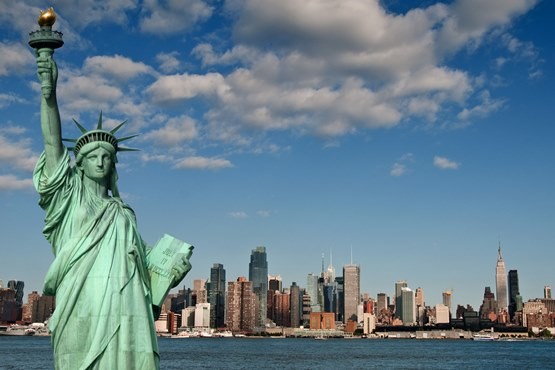Climate Change Threatens U.S. Cultural and Historic Landmarks
| Lemuel Cacho | | May 21, 2014 12:29 AM EDT |
(Photo : mommuseum.org) New report says U.S. national landmarks are at-risk and the culprit is climate change.
A group of crusading scientists warned that climate change is threatening cultural and historic landmarks across the United States.
The Union of Concerned Scientists (UCS), a DC-based nonprofit science advocacy organization, said that U.S. national landmarks face serious risk brought about by extreme changes in weather conditions.
Like Us on Facebook
The report, titled 'National Landmarks at Risk,' said that flooding due to rise in sea levels, coastal erosions, heavy rains and wildfires are causing irreparable damage to archaeological resources, historic buildings and cultural landscapes in the United States.
The report, however, was not peer-reviewed, but it identified 30 at-risk locations, which include places like the Statue of Liberty, Jamestown, Virginia., Cape Hatteras, North Carolina d the Kennedy Space Center in Florida.
Adam Markham, UCS director of climate impacts and co-author of the report, said these sites allow people to trace the history of the U.S.
Markham, citing National Park Service data, said 96 percent of national parks in the U.S. such as Mesa Verde, Bandelier, Cape Hatteras and the Everglades are located in areas where global climate change has been observed in the last 100 years.
He said massive fires have swept through these national parks in the last decade and left irreversible damage to the landscapes and, especially, cultural resources. Markham used Mesa Verde National Park, the Bandelier National Monument and other southwestern sites the resources of which - petroglyphs, pueblo masonry and pottery - were heavily damaged.
J. Marshall Shepherd, an atmospheric scientist from the University of Georgia who is not involved in the report, agrees with UCS's findings. He said the report echoes similar findings from other peer-reviewed studies and is consistent with the problems climate change poses to national landmarks including security installations.
Shepherd pointed out that that majority of the country's naval facilities are below sea level, much like the national treasures included in the report.
Some are, however, unconvinced with the report's findings. Chip Knappenberger of the Cato Institute, a DC-based free market think tank, said the UCS's report has a tendency to suffer from bias by confusing the impact of human-induced climate change with that of natural climate change.
He said that most of the report's examples were in areas where the effects of natural climate change are in the extremes.
©2015 Chinatopix All rights reserved. Do not reproduce without permission
EDITOR'S PICKS
-

Did the Trump administration just announce plans for a trade war with ‘hostile’ China and Russia?
-

US Senate passes Taiwan travel bill slammed by China
-

As Yan Sihong’s family grieves, here are other Chinese students who went missing abroad. Some have never been found
-

Beijing blasts Western critics who ‘smear China’ with the term sharp power
-

China Envoy Seeks to Defuse Tensions With U.S. as a Trade War Brews
-

Singapore's Deputy PM Provides Bitcoin Vote of Confidence Amid China's Blanket Bans
-

China warns investors over risks in overseas virtual currency trading
-

Chinese government most trustworthy: survey
-

Kashima Antlers On Course For Back-To-Back Titles
MOST POPULAR
LATEST NEWS
Zhou Yongkang: China's Former Security Chief Sentenced to Life in Prison

China's former Chief of the Ministry of Public Security, Zhou Yongkang, has been given a life sentence after he was found guilty of abusing his office, bribery and deliberately ... Full Article
TRENDING STORY

China Pork Prices Expected to Stabilize As The Supplies Recover

Elephone P9000 Smartphone is now on Sale on Amazon India

There's a Big Chance Cliffhangers Won't Still Be Resolved When Grey's Anatomy Season 13 Returns

Supreme Court Ruled on Samsung vs Apple Dispute for Patent Infringement

Microsoft Surface Pro 5 Rumors and Release Date: What is the Latest?










